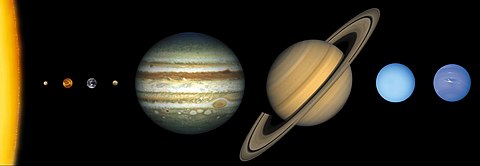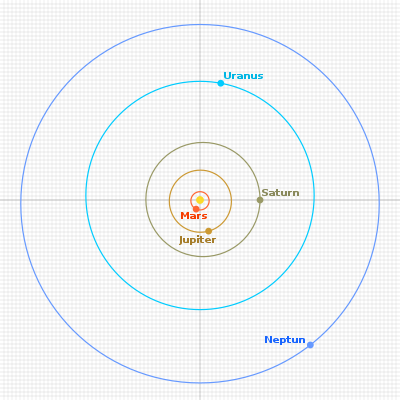Inner and outer planet
The eight planets of the solar system are divided into four inner planets and four outer planets . The classification defines two groups, which differ greatly in their chemical structure. All inner planets are terrestrial planets and thus differ significantly from the outer planets, which are all gas giants . The inner planets orbit the sun within the asteroid belt , the outer ones outside.
The inner planets are:
The area of the inner planets together with the asteroid belt is also known as the inner solar system .
The outer planets are:
Accordingly, the area of the outer planets is also referred to as the outer solar system .
Until August 24, 2006, Pluto was also one of the outer planets. However, after a redefinition of the term planet by the International Astronomical Union (IAU), this status was revoked. A well-known mnemonic for the order of the planets from the sun by Sonnennah remote reads: " M a V ater e rklärt m ir j eden S aturday u nseren N night sky." The first letter shall coordinate with those of the planets in line.
Lower and Upper Planets
In contrast to this planetologically based distinction, the subdivision into lower and upper planets as a pair of categories of observing astronomy refers to their different observation conditions from the earth, due to their orbit inside or outside the earth's orbit .
literature
- Meyer's Handbook of Space . Meyers Lexikonverlag Mannheim Leipzig Vienna Zurich 1994, p. 86. ISBN 3-411-07757-3


